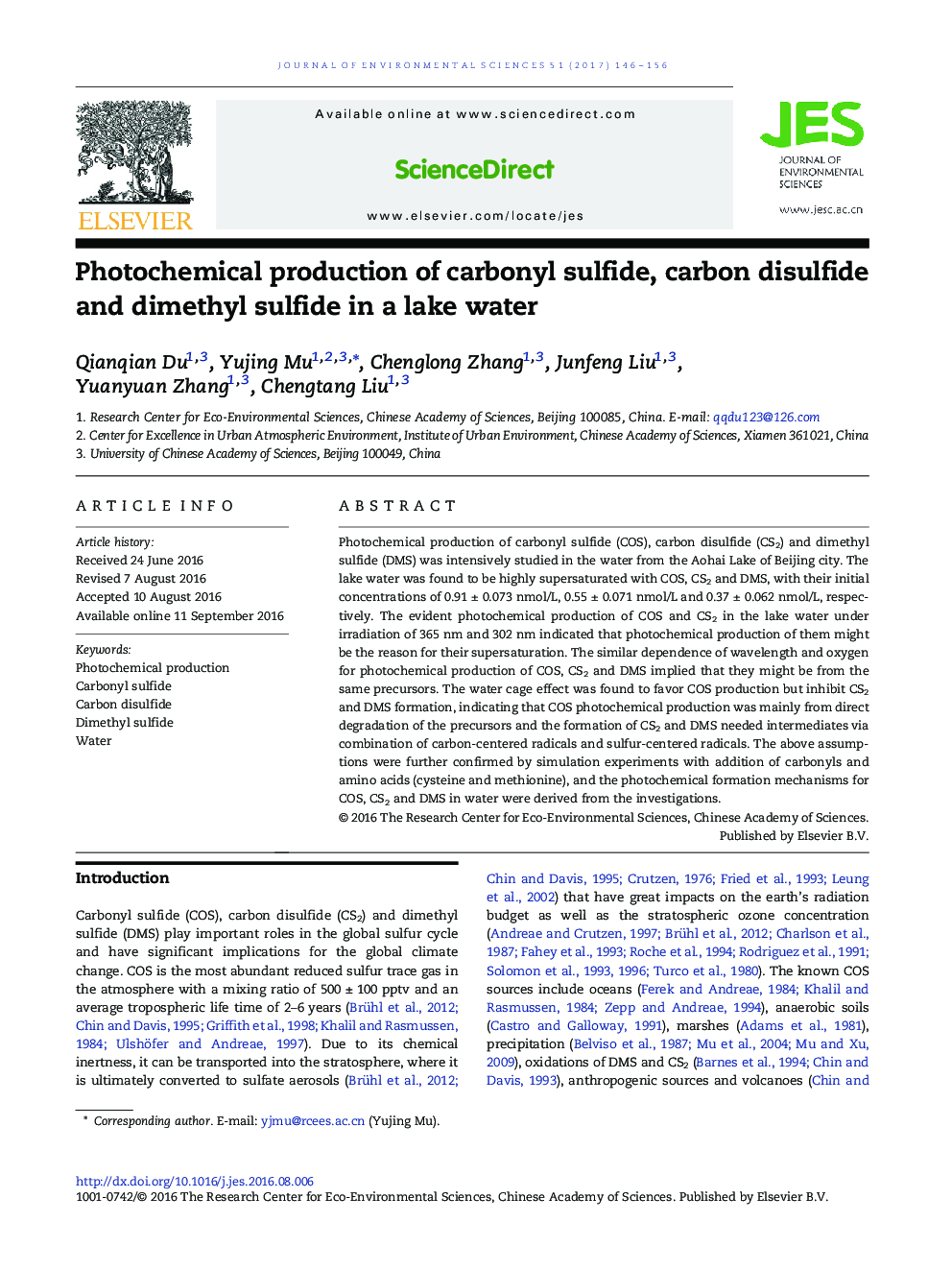| Article ID | Journal | Published Year | Pages | File Type |
|---|---|---|---|---|
| 5754099 | Journal of Environmental Sciences | 2017 | 11 Pages |
Photochemical production of carbonyl sulfide (COS), carbon disulfide (CS2) and dimethyl sulfide (DMS) was intensively studied in the water from the Aohai Lake of Beijing city. The lake water was found to be highly supersaturated with COS, CS2 and DMS, with their initial concentrations of 0.91 ± 0.073 nmol/L, 0.55 ± 0.071 nmol/L and 0.37 ± 0.062 nmol/L, respectively. The evident photochemical production of COS and CS2 in the lake water under irradiation of 365 nm and 302 nm indicated that photochemical production of them might be the reason for their supersaturation. The similar dependence of wavelength and oxygen for photochemical production of COS, CS2 and DMS implied that they might be from the same precursors. The water cage effect was found to favor COS production but inhibit CS2 and DMS formation, indicating that COS photochemical production was mainly from direct degradation of the precursors and the formation of CS2 and DMS needed intermediates via combination of carbon-centered radicals and sulfur-centered radicals. The above assumptions were further confirmed by simulation experiments with addition of carbonyls and amino acids (cysteine and methionine), and the photochemical formation mechanisms for COS, CS2 and DMS in water were derived from the investigations.
Graphical abstractDownload high-res image (58KB)Download full-size image
